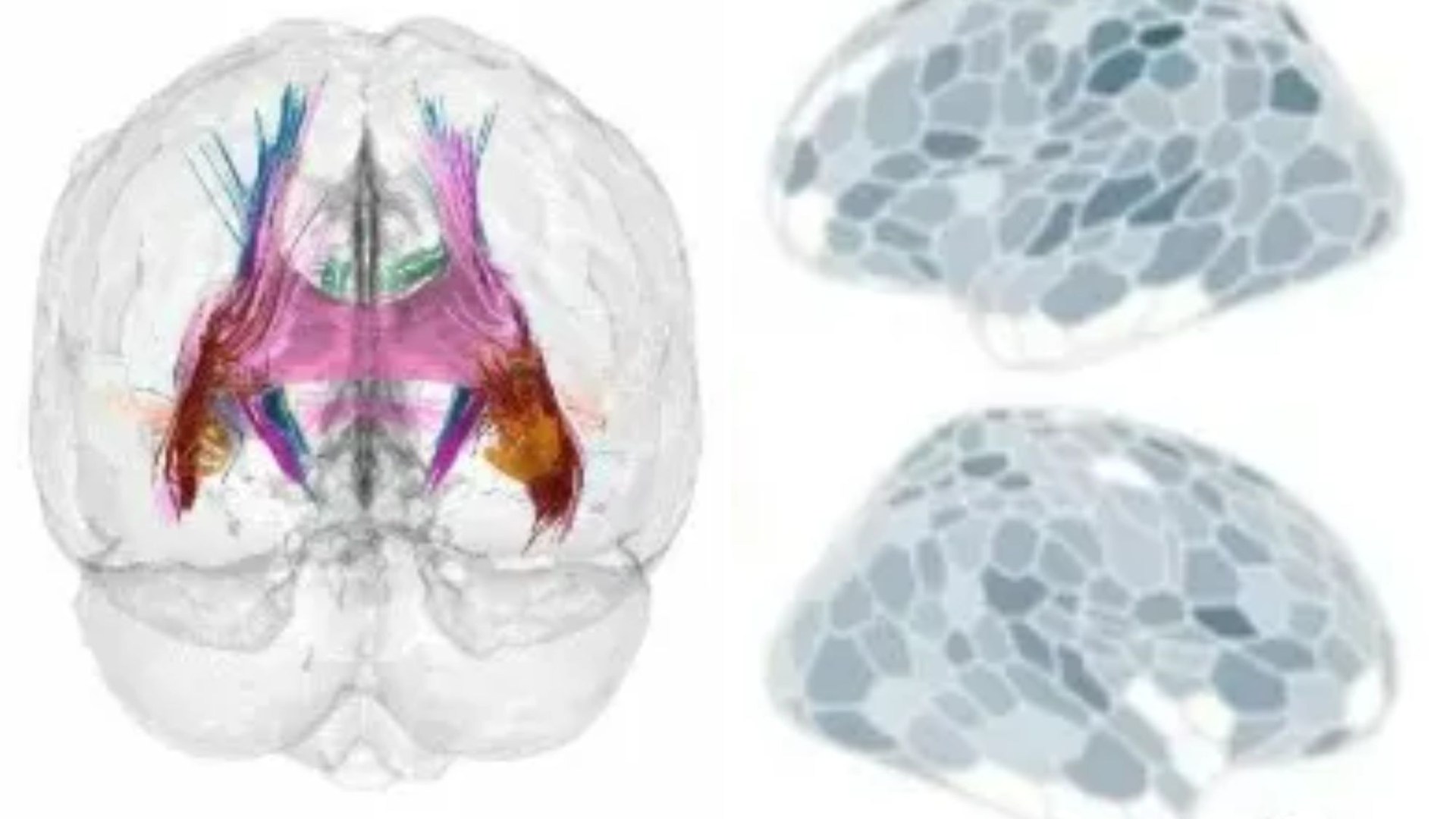IT SEEMS pregnancy brain really does exist – as scans shed light on exactly how much having a baby can change the brain.
Changes can linger for years after birth and only a few regions of the brain remain untouched, the first “map” of the process suggests.
3

3
Scientists took 26 MRI scans of a 38-year-old woman’s brain before conception, throughout her pregnancy and until two years after childbirth.
The findings show that some parts of the human brain may shrink in size during pregnancy, but become better connected.
A few regions of the brain remain untouched by the transition to motherhood, the study published in Nature Neuroscience suggests.
Some of the changes may be permanent, as the brain essentially reorganises itself during pregnancy, experts suggested.
Researchers said the findings, based on brain scans from one mum, may represent one of the first comprehensive maps of changes in the organ before, during and after pregnancy.
“It’s the first detailed map of the human brain across gestation,” Emily Jacobs, of the University of California, Santa Barbara, told the BBC.
“We’ve never witnessed the brain in a process of metamorphosis like this.
“We are finally able to observe changes to the brain in real time.”
Laura Pritschet, from the University of California, and colleagues analysed the brain of scientist Elizabeth Chrastil who was planning an IVF pregnancy when the research was being discussed.
She now has a four-year-old son.
Researches conducted 26 MRI scans and blood tests three weeks before conception and up to two years after Dr Chrastil – also one of the study authors – gave birth.
She was not made aware of the findings until afterwards.
The resulting scans were compared to brain changes in eight people who were not pregnant.
Researchers observed that the volume of grey matter – tissue that controls movement, emotions and memory – in nearly 80 per cent of the regions of Dr Chrastil’s brain decreased by about 4 per cent, with only a small rebound after pregnancy.
But there were increases in white-matter integrity – a measure of the health and quality of connections between brain regions – in the first and second trimesters, which returned to normal levels soon after birth.
The changes are similar to those during puberty, the researchers said.
Both changes coincided with rising levels of the hormones estradiol and progesterone.
According to the study, some of the changes in the brain were still present two years postpartum, including some of the shrinking, while others returned to similar levels as pre-conception by around two months after the birth.
‘What’s normal during pregnancy and what isn’t’ boxout
Your body can undergo a number of changes while you’re pregnant and it’s very common to experience some of the following symptoms:
- Constipation
- Cramps in your muscles and feet
- Back pain or headaches
- Bleeding gums
- Peeing a lot or experiencing incontinence
- Skin and hair changes
- Varicose veins
The NHS advised you call your midwife or GP immediately if you experience vaginal bleeding.
And though morning sickness is common, the NHS also urged that you contact your GP, midwife or 111 if you’re vomiting and:
- Have very dark-coloured urine or have not had a pee in more than 8 hours
- Are unable to keep food or fluids down for 24 hours
- Feel severely weak, dizzy or faint when standing up
- Have tummy (abdominal) pain
- Have a high temperature
- Vomit blood
- Have lost weight
Increased vaginal discharge can also be common, but you should get help if it smells strange or unpleasant, if its green or yellow and if you feel itchy or sore around your vagina
Nearly 85 per cent of women become pregnant at least once, and 140 million women each year become pregnant.
The physical changes to the body during pregnancy are well documented, but much less is understood about how and why the brain changes.
Mums may talk about having “pregnancy brain” or “baby brain”, to describe feeling forgetful, absent-minded or having brain fog.
Previous studies have focused on brain scans before and soon after pregnancy, rather than throughout the process.
Dr Chrastil said: “From a sort of a subjective standpoint, I didn’t particularly feel any different during pregnancy.
“Some people talk about ‘mummy brain’, or things like that, and I didn’t really experience any of that.
“But obviously we know that there are these changes.”
She added that as a neuroscientist, it was “cool” to be able to contribute to science in this way
Emily Jacobs, of the University of California, Santa Barbara, said: “There is so much about the neurobiology of pregnancy that we don’t understand yet, and it’s not because women are too complicated. It’s not because pregnancy is some Gordian knot.
“It’s a by-product of the fact that the biomedical sciences has historically ignored women’s health.
“It’s 2024 and this is the first glimpse we have at this fascinating neurobiological transition.
“Our ignorance has consequences.
“Scientists don’t have the data we need to predict postpartum depression before it manifests, we don’t have the data we need to understand the effects of pre-eclampsia on later life brain health. We need better data.”
The researchers hope that further scans and study could help shed light on conditions like postnatal depression, pre-eclampsia, brain ageing and why pregnancy can reduce migraines.

3




